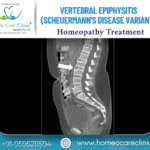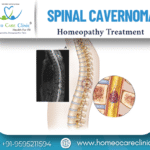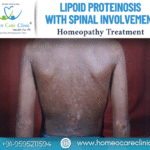Cerebral palsy (CP) is a neurological disorder affecting movement, posture, and muscle coordination. It occurs due to damage to the developing brain, often before or during birth, or in early childhood. Homeopathy offers a natural and holistic approach to managing the symptoms of cerebral palsy by focusing on individual needs and promoting overall well-being.
In this blog, we’ll explore cerebral palsy, its types, common symptoms, and how homeopathy can assist in improving the quality of life for individuals with CP.
What is Cerebral Palsy?
Cerebral palsy, often referred to as C palsy or cerebral P, is a group of disorders caused by damage or abnormal development in the brain during the early stages of life. This damage impacts the ability to control muscles, leading to challenges in movement, balance, and posture.
Causes of Cerebral Palsy
The condition may result from:
- Prenatal factors: Infections, maternal health issues, or lack of oxygen during pregnancy.
- Perinatal factors: Complications during delivery, such as oxygen deprivation or birth trauma.
- Postnatal factors: Brain infections, head injuries, or severe jaundice in early childhood.
Types of Cerebral Palsy
There are four main types of cerebral palsy based on the area of the brain affected and the movement disorders experienced:
1. Spastic Cerebral Palsy
This is the most common type, affecting approximately 80% of people with CP. It is characterized by:
- Stiff or tight muscles.
- Difficulty with movement due to increased muscle tone.
- Challenges in walking or coordination.
2. Dyskinetic Cerebral Palsy
Dyskinetic CP causes involuntary and uncontrollable movements, including:
- Jerky, slow, or twisting motions.
- Difficulty in sitting, walking, or maintaining posture.
- Fluctuations in muscle tone (from stiff to floppy).
3. Ataxic Cerebral Palsy
This form primarily affects balance and coordination, leading to:
- Shaky or unsteady movements.
- Difficulty with precise tasks like writing or picking up objects.
- Problems with walking due to poor balance.
4. Mixed Cerebral Palsy
Some individuals may exhibit symptoms of more than one type of CP, referred to as mixed CP.
Symptoms of Cerebral Palsy
The severity and range of symptoms vary depending on the type of CP. Common signs include:
- Difficulty walking or crawling.
- Delayed milestones like sitting, rolling, or standing.
- Poor coordination or balance.
- Speech or communication challenges.
- Seizures in some cases.
Cerebral Palsy Treatment Options
Conventional treatment focuses on managing symptoms through physical therapy, medication, and surgical interventions. While these approaches are helpful, many families seek complementary therapies like homeopathy to support overall improvement in quality of life.
How Can Homeopathy Help Cerebral Palsy?
Homeopathy takes a holistic approach to health, emphasizing the treatment of the person as a whole rather than just addressing symptoms. Here’s how it contributes:
- Individualized Treatment
Homeopathic remedies are tailored to each individual’s specific symptoms, personality, and health history. This personalized care often leads to better results. - Improving Neurological Function
Many homeopathic medicines aim to stimulate the body’s self-healing mechanisms, potentially enhancing brain function and muscle control in CP patients. - Managing Associated Symptoms
Homeopathy addresses associated problems like seizures, drooling, speech issues, and digestive concerns, promoting overall wellness. - Gentle and Safe
Homeopathic remedies are non-toxic and free from side effects, making them suitable for children and adults alike.
Common Homeopathic Remedies for Cerebral Palsy
Here are some homeopathic remedies frequently considered in the treatment of CP:
1. Calcarea Phosphorica
- Helps in strengthening bones and improving developmental delays.
- Beneficial for children who experience slow growth or weak muscles.
2. Silicea
- A remedy for improving muscle strength and coordination.
- Often used when there is delayed walking or talking.
3. Bacopa Monnieri (Brahmi)
- Enhances cognitive functions and brain health.
- Promotes focus, memory, and learning.
4. Causticum
- Suitable for spasticity and involuntary muscle movements.
- Often used in cases of stiffness or jerky movements.
5. Hypericum Perforatum
- Useful for nerve injuries and improving nerve-related symptoms.
Note: *- Above medicines are for knowledge purpose only. Take the medication only after doctor’s consultation. DO NOT SELF MEDICATE
World Cerebral Palsy Day
World Cerebral Palsy Day, celebrated on October 6, is an opportunity to spread awareness about CP and advocate for the rights of individuals with the condition. It encourages acceptance, inclusion, and the development of better treatment options.
On this day, families, caregivers, and professionals come together to support the CP community and share inspiring stories of resilience.
Real-Life Case Study: A Homeopathic Approach
Conclusion
Cerebral palsy is a challenging condition that requires comprehensive care and support. While conventional therapies play a vital role, homeopathy offers a complementary approach to managing symptoms and enhancing overall well-being. With its personalized, safe, and gentle remedies, homeopathy can be a valuable ally in improving the lives of individuals with CP.
If you or someone you know is living with cerebral palsy, consider exploring homeopathic treatment alongside other therapies for a holistic approach to care.
FAQs
1. What is cerebral palsy?
Cerebral palsy is a neurological disorder caused by brain damage or abnormal brain development, affecting movement, muscle tone, and posture.
2. cerebral palsy in hindi?
“सेरेब्रल पाल्सी (Cerebral Palsy)” के बारे में जागरूकता बढ़ रही है। होम्योपैथी द्वारा उपचार एक प्रभावी और सुरक्षित तरीका हो सकता है।
3. Is homeopathy effective for cerebral palsy?
Homeopathy is effective as a supportive therapy for CP, focusing on individualized care and addressing specific symptoms.
4. Are there any side effects of homeopathic remedies?
No, homeopathic remedies are natural, gentle, and free from side effects.
5. What is World Cerebral Palsy Day?
World Cerebral Palsy Day is celebrated on October 6 to raise awareness and advocate for individuals with CP.
In Conclusion
Homeo Care Clinic offers a holistic approach to treating the disease. The remedies mentioned above can treat the underlying causes of the condition and offer relief from the discomfort. However, it is important to consult a qualified homeopathic practitioner for the correct dosage and duration of treatment. Homeo Care Clinic provides comprehensive care for various ailments, and offers customized treatment plans based on individual requirements.
To schedule an appointment or learn more about our treatment, please visit our website or give us a call +91 9595211594 our best homeopathy doctor will be here to help.
Follow us on Facebook, Twitter, and Instagram for valuable insights into the world of homeopathy and holistic health.
Facebook – https://www.facebook.com/homeocareclinicpune
Instagram – https://www.instagram.com/homeocareclinic_in
Website – https://www.homeocareclinic.in
Success Stories of Patients – homeocareclinic.in/category/case-study
YouTube Patient Review – https://www.youtube.com/playlist?list=PL__SnPQCl4WLPFV7iJOdQxn4YaB6IkPHJ
LinkedIn – linkedin.com/company/homeo-care-clinic
Chat with a best homeopathic doctor privately
If you have any queries regarding your disease or any symptoms, click to send a WhatsApp message. Our best homeopathy doctor will be happy to answer you.
Book an Appointment
If you want to visit our clinic, click to book an appointment.
Online treatment
If you are a busy professional, or you are living in a remote town or city, with no best homeopathic doctor near you, Click to start an online homeopathic treatment with the world’s exclusive, most experienced and best homeopathic clinic, managed by Dr. Vaseem Choudhary world-renowned homeopathic doctor expert







